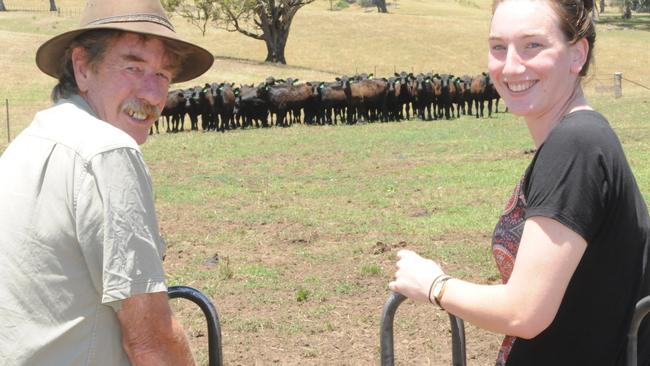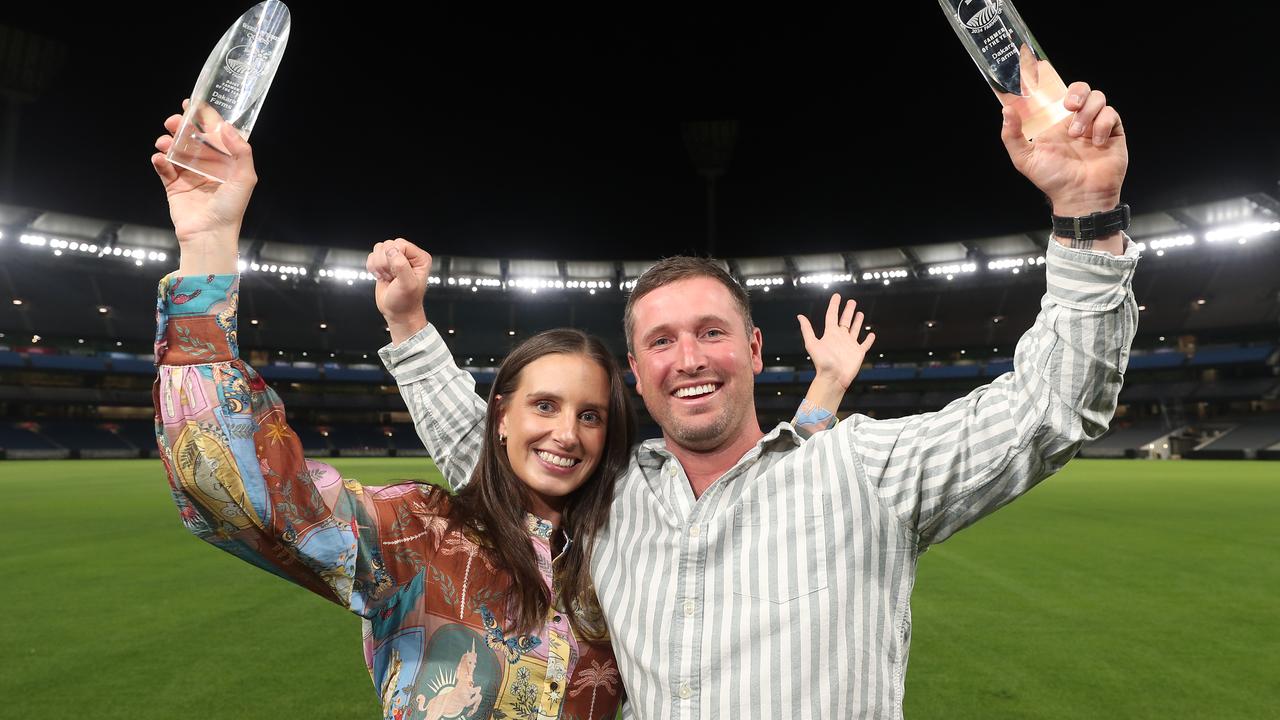The Cascade Angus herd in the Tallangatta Valley bred to perform
MICHAEL McCormack puts great store in knowing all he can about his herd.

POINT to any cow in The Cascade herd and owner Michael McCormack can talk about its breeding for four generations back.
His battered notebooks show weight gains from birth for every animal, “backed up” on the computer.
Yet despite this attention to detail and almost fanatical attention to genetics, this is not a stud herd.
It could be — but Michael is too interested with the breeding to worry about the rigmarole that goes along with running a stud.
This Angus herd is a finely tuned machine, with a line of cattle as even as any you could see.
There’s a good reason, Michael said. Each year, genetics are carefully selected and then used over the entire herd — usually from one or two bulls.
Some of the 400 cows and heifers joined each year are artificially inseminated on the 730ha McCormack family property in the Tallangatta Valley of Victoria’s North East.
The balance is joined to the small team of bulls in a split calving to maximise the use of these genetics.
BULK IT UP
GROWTH has been a key factor when selecting genetics.
Now, Michael’s love affair is with sons of the bull Tuwharetoa Regent D145, which he says have delivered even more impressive growth rates to an already high-performing herd.
He points to one of the weaner heifers in his herd by the Regent son — at nine months, it has put on close to 1.5kg/day since birth and weighed almost 400kg at weaning.
“This is a bull that produces calves with weight for age, huge growth and marbling, too,” he said.
But Michael is already looking for the next bulls to take his herd further.
A small battery of sires in his herd go over all the cows each year, and for two years in a row.
New sires are then selected so the genetic base does not narrow.
When looking for the genetics he wants to use, Michael breaks Breedplan figures down into four groups.
The first is for calving traits, the second is fertility, the third is growth and the fourth is carcass.
Bulls must perform in each group to be considered for use in The Cascade herd. Calving ease, gestation length and birth weight are some of the most important, all falling in the calving group.
“We have been so careful I can go away when the heifers are calving and not worry about it,” Michael said.
And while sometimes it means buying a bull that meets the criteria, other times it means the use of semen.
IT MAKES CENTS
MICHAEL is not afraid of using artificial insemination in the herd and said the figures stacked up.
“Using artificial insemination allows us to cut the price of the sire battery,” he said.
He also collects semen from bulls he has bought, mainly as an insurance policy if something happens to the sire.
“An insurance policy might pay you back some money but it does not give you a bull to use,” Michael said.
“The first thing we do when we buy a bull is collect 300 or 400 doses of semen, because it is an insurance policy that delivers.”

The cost of his artificial insemination program is about $25 a heifer, which includes all drugs, equipment and the technician but not the cost of the semen. Michael uses AI over all the heifers each year.
“Heifers are our cutting-edge genetics and by using AI over our heifers, it allows a faster turn around in genetics,” he said.
“It takes two days to do a heifer program.
“Doing it over two days cuts joining time — we then use back-up bulls for two cycles to allow the herd to calve over seven weeks.
“This produces a more even line of steers to market and saves management time as all calves are of a similar age.”
The aim is to get about 70 per cent of the heifers pregnant through the AI program, with back-up bulls used to ensure a high pregnancy rate.
NO BROKEN RECORD
MICHAEL knows the background of each of his females thanks to excellent record keeping, and tagging each calf when it is born.
“It is not hard to tag the calves and because we are aware of temperament in the sires we use, we can do this easily,” he said.
“And it is vital when you want to be able to monitor performance that you accurately tag the offspring.”
All cattle also carry an National Livestock Identification System tag and are freeze branded.
While The Cascade used to be in a regular in the market with big lines of steer weaners, it has switched to selling cows and calves.
Part of this is due to watching the big sell off of females, which Michael said would generate good returns for breeding units down the track.
But it was also about being different and doing something others were not.
“We just saw a market for cows and calves, and already we have got up to $1450 privately this year,” he said.
MEATING DEMAND
THE Cascade sells cow and calf units, mostly privately, to a waiting list wanting to a share of the carefully selected genetics. The units are sold when the calves are about 2½ months. It means the oldest females in the herd are now just four years.
“We sell our cows and calves when they are five years, which some people think is just in their prime,” Michael said.
“But we are excited that we are getting the best genetics in our heifers and some of the calves from our heifers are the best calves in the herd.”
They still sell steer weaners, with the sales program designed around feed supplies, delivered in the 1000mm rainfall country from a mix of native and improved pastures.
“Autumn cows calve on March 1 and their steers are sold in the following new year,” Michael said.
“Spring cows calve in the second week in July, allowing steers to be marketed before the winter.”
Michael continues to aim to breed a better line of cows, even though his herd would be the envy of fellow producers.
“Breeding cattle is like using building blocks, putting them together to get what you would like,” he said.


